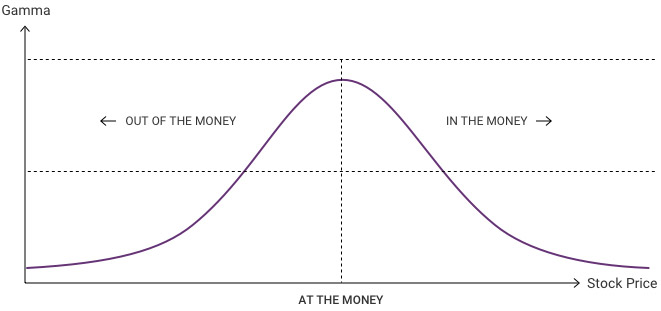Options involve risk and are not suitable for all investors. Certain requirements must be met to trade options. Before engaging in the purchase or sale of options, investors should understand the nature of and extent of their rights and obligations and be aware of the risks involved in investing with options. Please read the options disclosure document titled "Characteristics and Risks of Standardized Options (PDF)" before considering any option transaction. You may also call the Investment Center at 877.653.4732 for a copy. A separate client agreement is needed. Options contracts are assessed a per-contract charge and may incur an additional per trade commission for rep-assisted orders.
The maximum loss, gain and breakeven of any options strategy only remains as defined so long as the strategy contains all original positions. Trading, rolling, assignment, or exercise of any portion of the strategy will result in a new maximum loss, gain and breakeven calculation, which will be materially different from the calculation when the strategy remains intact with all of the contemplated legs or positions. This is applicable to all options strategies inclusive of long options, short options and spreads. To learn more about Merrill's uncovered option handling practices, view
Naked Option Stress Analysis (NOSA) (PDF).
Early assignment risk is always present for option writers (specific to American-style options only). Early assignment risk may be amplified in the event a call writer is short an option during the period the underlying security has an ex-dividend date. This is referred to as dividend risk.
Long options are exercised and short options are assigned. Note that American-style options can be assigned/exercised at any time through the day of expiration without prior notice. Options can be assigned/exercised after market close on expiration day. View specific
Merrill Option Exercise & Assignment Practices (PDF).
Supporting documentation for any claims, comparison, recommendations, statistics, or other technical data, will be supplied upon request.
Please read the options disclosure document (PDF)
What is Gamma?
Gamma represents the rate of change between an option's Delta and the underlying asset's price. Higher Gamma values indicate that the Delta could change dramatically with even very small price changes in the underlying stock or fund.
Select to close help pop-up
An option is at the money if the strike price of the option is equal to the market price of the underlying security.
Select to close help pop-up
A call option is in the money if the strike price is less than the market price of the underlying security. A put option is in-the-money if the strike price is greater than the market price of the underlying security.
Select to close help pop-up
A call option is out of the money if the strike price is greater than the market price of the underlying security. A put option is out of the money if the strike price is less than the market price of the underlying security.

For illustrative purposes only.
Select to close help pop-up
The amount of the option premium that is attributable to the amount of time remaining until the expiration of the option contract.
Select to close help pop-up
The amount by which an option total premium exceeds its intrinsic value.
Select to close help pop-up
The amount by which an option is in-the-money.
Select to close help pop-up
An option is near the money when the strike price is relatively close to the market price.
Gamma is a positive value for long positions and a negative value for short positions — regardless if the contract is a call or a put.
How is Gamma used?
The Stability of Delta
Gamma can be used to measure the stability or the instability of Delta. A higher Gamma is an indication of a greater potential change in Delta which equates to an instability of Delta. Essentially, when utilizing Delta for the probability of being in-the-money at expiration, Gamma can help determine the stability of the probability Delta provides.
Long Options and Gamma
As Gamma is a measure of the movement of Delta and Delta is the measure of the option's sensitivity to the underlying, Gamma can help indicate a potential acceleration in changes in the option's value. A higher Gamma indicates accelerated option value changes when the stock moves up or down by $1.00. This will in return, accelerate profits for a long position and also accelerate losses.
Short Options and Gamma
Higher Gamma can increase risk for option sellers as the option experiences accelerated movement. This is because options can experience drastic profit and loss swings and a higher Gamma indicates accelerated movement of the underlying. A short un-covered option has increased risk — a higher Gamma increases this risk as the stock can accelerate movement in either direction creating a loss very quickly.
What are other factors to consider?
Gamma goes to 0 when Delta has reached 0 (out-of-the-money) or +1 / -1 (in-the-money) at expiration. In other words, a Delta of 0 at expiration means the option is worthless as the market price is more favorable than the strike price. A Delta of +1 or -1 at expiration means the option is worth executing as the strike price is more favorable than the market.
Deep in-the-money options have a Delta that is already extremely close to +1 or -1 and Gamma is less prominent, this is why Gamma is typically higher for at-the-money options.
As Gamma increases, the cost of owning an option over time (Theta) decreases. Theta measures the expected rate of decline of an option's value over time. This is prevalent as options lose their time value as they approach expiration.